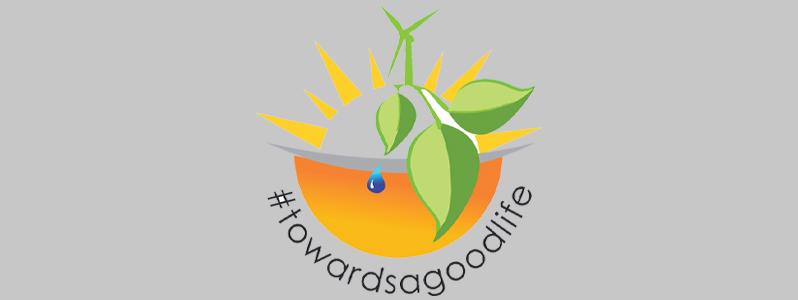By Rear Admiral (Rtd.) Gary A. R. Best,
Presidential Advisor on the Environment
THE term sustainable development has become quite common in the development context over the past decades. In fact, only recently in 2015, the world, including Guyana , signed onto the UN Sustainble Development Goals (SDGs), the UN successor initiative to the Millenium Development Goals, which is intended to advance basic living standards worldwide by ending poverty by the year 2030. We contend that in order to meet the seventeen (17) SDGs and the promised good life, a clear understanding of the general concepts surrounding sustainability is a necessary imperative. A good  place to commence such an understanding is the The Brundtland Report, which defines sustainable development as “Development that meets the need of the present without compromising the ability of future generations to meet their own needs.”(Our Common Future 1987).
place to commence such an understanding is the The Brundtland Report, which defines sustainable development as “Development that meets the need of the present without compromising the ability of future generations to meet their own needs.”(Our Common Future 1987).
This inter and intra-generational concept is also captured within Articles 14; 25; 29; 36 and 38A of the Guyana Constitution, when read together. The Bruntland Report further indicated that the concept of sustainable development does imply relative limits on the ability of the biosphere to absorb anthropogenic actions. How do we, therefore, break down this definition into meaningful actions? Sutherland (2008) suggests that in order to operationalise the Bruntland definition of sustainability, it is necessary for states to understand that the systems we design and operate for development must not diminish our natural resources or affect our ecological life cycles. In other words, as we industralize our natural capital, whether through all forms of mining or agro- forestry, care and attention must be taken to protect the environment.
Sutherland also suggests that the three-pillar approach provides a better foundation in understanding and achieving sustainability. He defines it thusly: ‘Sustainability recognizes the interdependence of ecological, social, and economic systems – the three pillars of sustainability’ . We submit that the three-pillar apprioach speaks to an inter-sectoral approach to sustaianble development, and in that regard, opportunities for avoiding misaligned development are provided. The writer Pfahl (2005), on the other hand, identifies social, economic and environmental elements as the three core elements of sustainability, which actually mirrors Sutherland’s view. However, the three- pillar approach is not without dissent. In this regard, Robinson (2009) believes that, in the end, it may be good politically to have some imprecision in the definition of sustainability. In Robinson’s view, governments actually prefer the term sustainable development as opposed to sustainability, because the former highlights the dynamics between the environment and poverty as articulated in the Bruntland Report.
Mr Best is a retired Rear Admiral and former Chief of Staff of the Guyana Defence Force. He is an Attorney at Law and the Presidential Advisor on the Environment. He also holds Masters Degrees from the University of the West Indies and the University of London. His research areas include climate change governance, climate change finance international relations and environmental law.
However, even as we look at ways and means to integrate the environment into development or development into environment, Mc Michael et al. (2003) remind us that the challenge and eventual success of sustainability depend on a vigorous and intensive interdisciplinary collaboration among the key sectors such as science, the environment, ecology, ecosystems, biodiversity and economics. Sustainable development must therefore be seen as wider than that comtemplated by Bruntland. In Guyana’s context, technology and science should be starters at the primary level of education so as to embed them into the education system. Widening the three-pillar approach, Sneddon et al. (2006) offer a pluralistic perspective. In their view, ‘A pluralistic, critical approach to sustainable development offers fresh interpretations of intractable environment-development dilemmas’. Embracing pluralism,in the context of sustainable development involves ecological economics, freedom-oriented development, deliberative democracy and political ecology. We contend that such an approach will enable a focus on national human communities and contribute to the enhancement of justice and equity across our nation.
A key element in attaining sustainability by developing states is the degree of technology transfer enjoyed by these states. Developed nations are mandated to provide financial resources for the transfer of technology required by developing states, which will ultimately determine the extent to which developing states, including Guyana, are able to meet their commitments under the United Nations Convention on Climate Change (UNFCCC 1992). Knowledge from research can be very beneficial to sustainability and this can be achieved through the transfer- of-technology approach. Sustainable development can also benefit from partnerships formed under the UNFCCC in pursuit of the Agenda 21 goals. This type of transfer is most suitable to agriculture and manufacturing entities. Quite expectedly, the Report of the World Summit on Sustainable Development held in Johannesburg in 2002, described knowledge transfer to the developing nations as a significant input in poverty eradication. However, there is a down side, in that most research is expensive and follows a trickle-down procedure which involves justifications by researchers and, at times, political interference in its transmission. Equally important to the developed nations, is the issue of intellectual property rights and how such rights would be protected in the transfer of technology arrangements. As we in Guyana pursue opportunities to benefit from technology transfer, so too must we provide the legislative framework to protect intellectual property at the national and international levels.
Sustainability offers a solid foundation for Guyana to pursue its green development pathway and provide the good life. A lot remains to be seen and fleshed out as we move forward, particularly in determining the policy context of the green economy pathway. Is the green eonomy pathway a subset of sustainability or is it perceived in the reverse? An examination of this dichotomy will be the subject of another article.
(Comments can be sent to towardsagoodlife@gmail.com)



.jpg)










